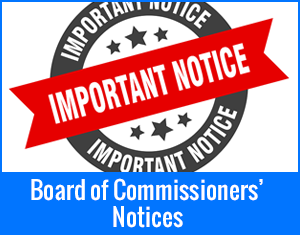- By April Bowman
- Posted Wednesday, October 31, 2018
Do you have a winter feeding plan for your livestock? Do you know the nutritional value of your hay?
Hay Donations
Individuals interested in donating hay to the hurricane recovery effort can list their donation on the N.C. Cooperative Extension, Hay Donation form at https://ncdisaster.ces.ncsu.edu/hay-donation/. If you want to donate, but do not have access to the internet, please contact April Bowman, Livestock Extension Agent at 336-703-2855.
This page is intended to supplement NCDA&CS's Hay Alert website at http://www.ncagr.gov/hayalert/ where you may list hay for sale (or donation). When you place an ad on Hay Alert there are options for "baled hay for sale”, “baled hay needed”, "standing hay for sale", or "standing hay needed". If you don't need a whole truckload of hay you can use the "share a load" ad to try to find other producers to split a load with.
Hauling
There is some funding to help with hauling. If you know anyone with a road tractor that is willing to haul for cost, please let me know or denote that in the hay donation form. Typically 35-36 4 X 4 round bales will fill a trailer.
Tax Deduction
Donations may also be claimed as a tax deductible donation if you donate through the above channels.
Hay Testing
Everyone is encouraged to have their hay tested whether you are keeping it for your own personal use, or donating it to others. The best results are obtained when a core sampler is used to sample the hay. We have one available for you to borrow here at the office that attaches to a standard drill (1450 Fairchild Road Winston-Salem) and can be picked up Monday through Friday from 8 a.m. to 5 p.m. (call first to make certain that it’s here).
Regardless of the sampling technique, you will want to obtain a sample from each unique “lot” of hay. A lot is considered hay from the same field and the same cutting that was cured and stored under the same conditions. If a core sampler is used, take cores from 10-15 bales or enough cores to fill a quart-sized plastic bag. Always sample from the end of square bales or the sides of round bales. If a core sampler is unavailable grab samples can be tested. The best way to do this is to open several bales and grab portions from the center to tightly pack a gallon-sized plastic bag. This test will not be as accurate as one obtained with a core sampler, but it is still useful. After obtaining the sample you can mail, ship or deliver it to the forage lab along with $10. The addresses are on the forage test form that must be completed and sent in with your sample. We have those forms available here in our office (1450 Fairchild Road Winston-Salem), Monday through Friday from 8 a.m. to 5 p.m. If you are donating an ENTIRE lot of hay, we can pay the $10 fee for you. If you plan to keep most of it for yourself, then please try to pay the fee yourself.
Read more at: https://harnett.ces.ncsu.edu/hay-evaluation-and-testing/
WINTER FEEDING PLAN
Do you KNOW how much hay YOU NEED to make it through the winter? Do you have a winter feeding plan? Or do you wing it, and hope you have enough?
Body Condition Score Your Stock
Knowing if animals need to gain, maintain, or lose body condition is a key factor in planning your winter nutrition program. Body condition scoring is the most cost effective management tool you have. It can help you decide when to improve the nutritional plane to get better production and reproduction. When you face a short and/or low quality feed supply it is helpful to go through the animals and sort them into production groups, including body condition as one of the criteria.
Inventory Your Forage Supply and Develop a Feed Budget
You may already be able to predict when you will have to start feeding hay. Producers that have kept the gates closed and allowed grass to stockpile in some pastures will have a real advantage in available grazing compared to those that opened the gates and let the cows roam and work the whole farm during the late summer and early autumn. Strip grazing with temporary fencing will add even more grazing days.
However you do it, decide how many days you are likely to be feeding hay. Unfortunately, 100+ days will be a common answer. Once you have that number in mind, you can estimate your hay needs. Each lactating cow will need about 3% of body weight per day of hay (which includes waste). That means that small cows will need about 33 lbs of hay and large cows might need as much as 40 lbs of hay daily. Knowing how much your cows weigh is one factor you will need to know to calculate an accurate feed budget. Figure 4% of body weight for sheep or goats, and 2% of body-weight for horses.
Once you know the projected hay need, you should inventory your hay including counting the number of bales and coming up with a good estimate of bale weight. Once you have experience you can do a pretty good job feeling hay and estimating the weight, but the only accurate way of doing it is to put some bales on a scale. Keep in mind that round bales of hay rarely weigh as much as you think they ought to. Also, if hay has been outside and is wet, that water adds a lot to the weight of the bale but has no feeding value, so take that into account.
Evaluate Nutritional Quality of Your Hay and Develop a Supplementation Strategy
Usually grazed forages will meet the needs of a lactating beef cow with moderate milk production. However, it is very common for hay to be harvested late or under poor drying conditions , resulting in forage that is not up to the requirements of our typical beef cow.
- A mature cow will need about 60% TDN (energy) and 11% protein.
- Goats need 55-65 TDN (energy) depending on their stage of pregnancy/milking and 14% protein for high milking, 60 TDN for late pregnancy and average milk and only 55 TDN for early pregnancy. (https://content.ces.ncsu.edu/nutritional-feeding-management-of-meat-goats).
- Horses needs depend on their work load and growing horses need more than mature horses. 8-12% protein is usually satisfactory for mature horses, while young horses will likely need 12-18%. (http://go.ncsu.edu/horsenutrition).
Much of the hay you test will be in the mid 50s on TDN and less than 10% protein, but you won’t know if you don’t test!
Winter Feed Budget
Once you have your animals body condition score, weight, your forage analysis and the number of bales in each lot and their weight, feel free to contact me and we can develop a winter feed budget for your farm, April Bowman, awbowman@ncsu.edu or 336-703-2855.
Purchase Hay and/or Sell Stock to Balance Your Budget
If you come up significantly short of hay, you need to do something to balance your budget. There are two options and your choice likely comes down to the amount of readily available cash flow for your farm:
Sell off some of your livestock
Buy hay (sooner rather than later when supplies are more limited)
Test the hay before you buy an entire lot
Weigh some bales so you know what you are paying for
Medium quality hay delivered to you for less than $100/ton is a good deal
Written by: Matt Poore, Animal Science Departmental Extension Leader. NCSU. October 10, 2018.
Edited by: April Bowman, Extension Agent, Livestock, Forages, and 4-H Youth Development, N.C. Cooperative Extension, Forsyth County Center, October 27, 2018






